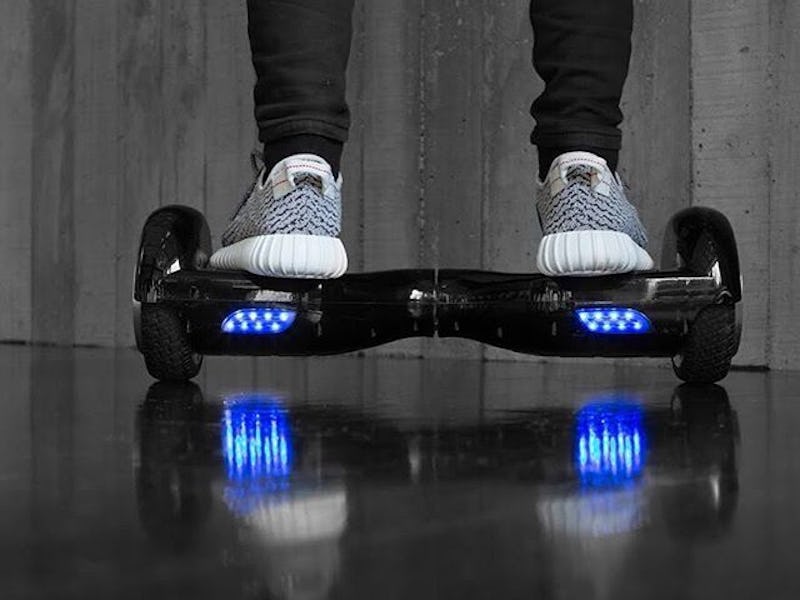Back to the Future fans who’ve spent decades coveting Marty McFly’s hoverboard might finally get one this holiday season, only to be be blown up by one of the expensive gadgets.
In the interest of public service journalism, Inverse reached out to Tony Le, CEO and founder of hoverboard company Glitek to find out how we can all keep our toes this holiday season.
“People think boards are all essentially the same, but there’s literally thousands of factories in China producing these things, literally millions of units per month,” Le says. “As we were planning our board, I must’ve visited over 100 factories. That sounds like a lot but I’ve seen them get set up overnight, that’s how popular these boards are. They look like sweatshops. There’s no training, there’s no testing of the product. There are factories that do test for things like vibration and breakage but most of them aren’t set up for the long term. And if you put them together cheaply you get problems.”
Le says the phenomenon of spontaneous hoverboard combustion can be traced to the gear’s battery.
“Battery issues we see are usually the result of cheap, Chinese-branded batteries,” he says. “Cheap batteries with no external or internal protection. It’s a huge cost saving to do the batteries that way. If you use high-end Samsung or LG batteries the price can go up to hundreds of dollars. In China, that’s adding on to a lot of expensive costs, including what they pay for shipping.”
Low cost electronics come with a high price. On Tuesday, a hoverboard exploded at a Washington Mall kiosk. A Louisiana home was destroyed this November in a hoverboard-related fire. And earlier this month, an Alabama man’s board went up in flame just days after Amazon made the delivery. Authorities in New York and Britain are already cracking down on the menace and banning the boards from public spaces.
Le urges consumers to take a close look at the packaging before buying a firecracker on wheels. Don’t expect it to be cheap, either.
“First off make sure it’s a legit company that has a physical presence in America and at least a one-year warranty,” he advises. “With a cheap battery, just based on the recharge cycle alone it would start to degrade pretty soon, so the companies using those don’t bother to offer a warranty. If they don’t specifically mention a brand-name battery, you’re probably getting something cheap. If you buy any hoverboard in the $300 to $400 range, you’re probably not getting a high-end battery.”
Another clue is how fast the board can go. The stronger a battery, the more speed the board has. A typical board operates at speeds of 10 miles per hour for about 20 miles, depending on the hardware.
“I just want people to know not all boards are built the same,” Le said. “There’s a lot of companies that are slapping things together, but there’s a lot of companies like us who are taking pride in the work.
One last note of precaution: If you do buy one, maybe don’t keep the potentially flammable gift directly under your Christmas tree.
